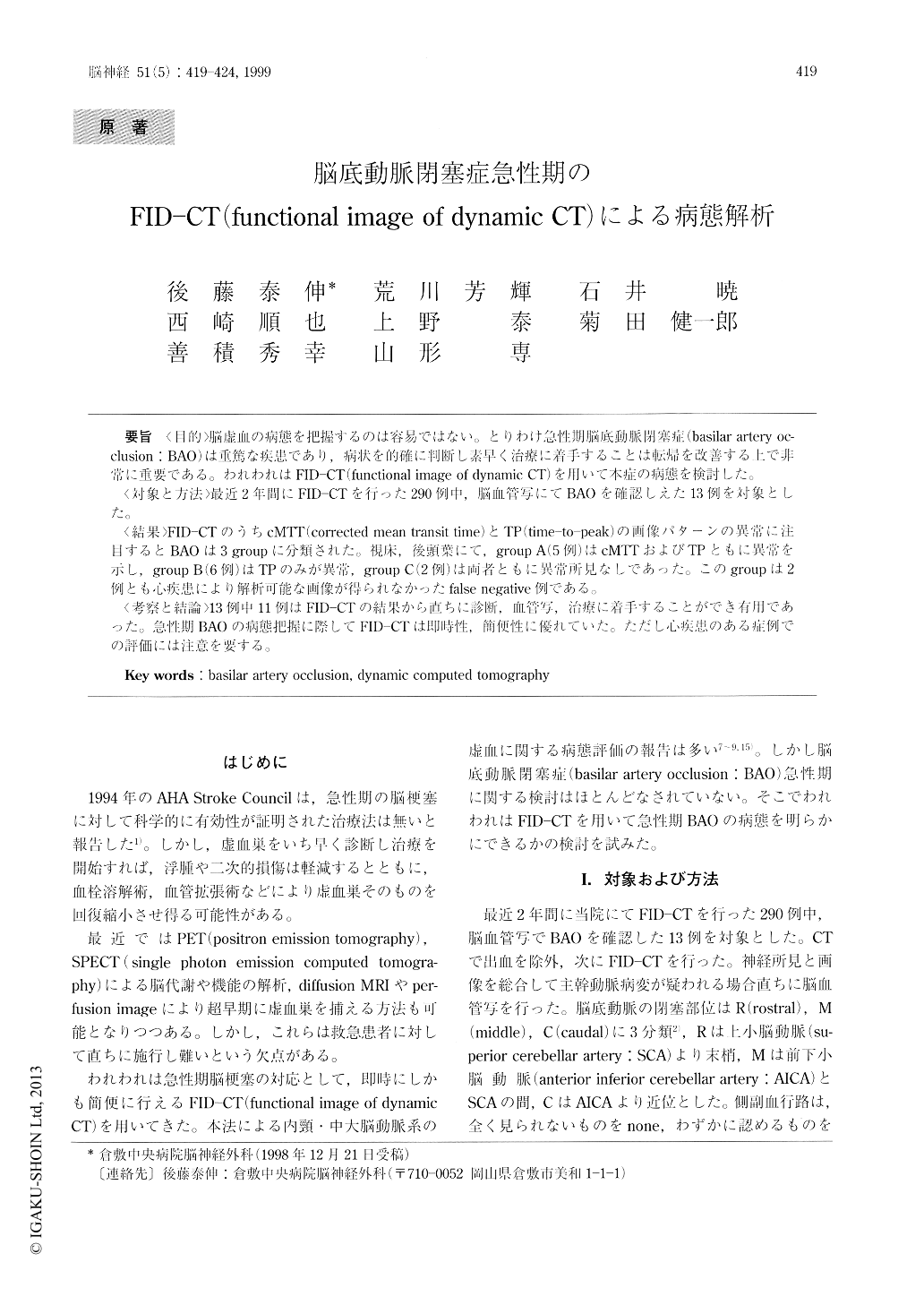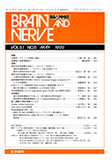Japanese
English
- 有料閲覧
- Abstract 文献概要
- 1ページ目 Look Inside
〈目的〉脳虚血の病態を把握するのは容易ではない。とりわけ急性期脳底動脈閉塞症(basilar artery oc-clusion:BAO)は重篤な疾患であり,病状を的確に判断し素早く治療に着手することは転帰を改善する上で非常に重要である。われわれはFID-CT(functional image of dynamic CT)を用いて本症の病態を検討した。
〈対象と方法〉最近2年間にFID-CTを行った290例中,脳血管写にてBAOを確認しえた13例を対象とした。
〈結果〉FID-CTのうちcMTT(corrected mean transit time)とTP(time-to-peak)の画像パターンの異常に注目するとBAOは3groupに分類された。視床,後頭葉にて,group A(5例)はcMTTおよびTPともに異常を示し,group B(6例)はTPのみが異常,group C(2例)は両者ともに異常所見なしであった。このgroupは2例とも心疾患により解析可能な画像が得られなかったfalse negative例である。
〈考察と結論〉13例中11例はFID-CTの結果から直ちに診断,血管写,治療に着手することができ有用であった。急性期BAOの病態把握に際してFID-CTは即時性,簡便性に優れていた。ただし心疾患のある症例での評価には注意を要する。
It is very important to make a prompt and accurate diagnosis and to commence pertinent treatment for pa-tients suffering from acute cerebrovascular occlusive disease. Thirteen patients (mean age: 67.1 years) with basilar artery occlusion (BAO) were enrolled in this study. Dynamic computed tomography functional im-ages (FID-CT) were analysed to determine whether this method could diagnose BAO in the acute phase.

Copyright © 1999, Igaku-Shoin Ltd. All rights reserved.


